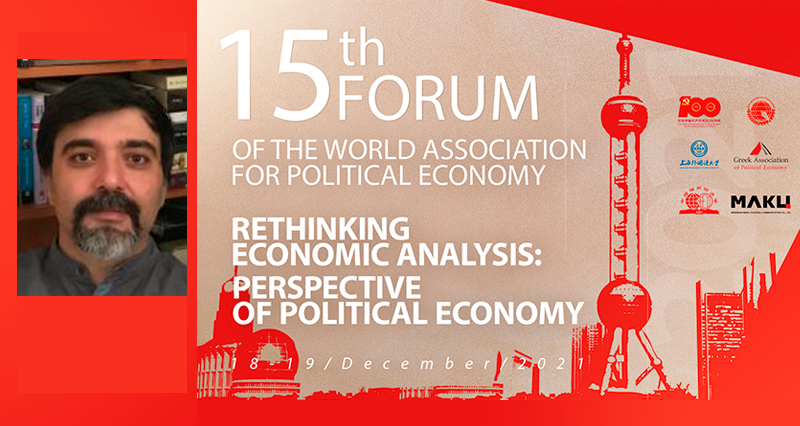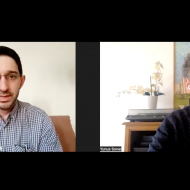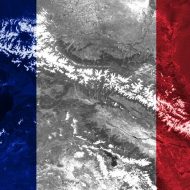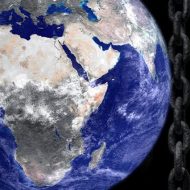The World Association of Political Economy (WAPE) has organized in cooperation with the Shanghai International Studies University (SISU) its 15th annual forum on December 18 and 19 in Shanghai, People’s Republic of China. The forum was titled this year “Rethinking economic analysis: Perspective of political economy”. Sessions were organized both online and in presence.
More than 300 hundred speakers from 40 countries attended the forum, including researchers from China, Cuba, Russia, Brazil, the U.S., India, Canada, France, Germany, Japan, Greece and Turkey. The forum took place as a meeting of who’s who of global Marxist political economy.
In the forum, several participants from Turkey also made presentation, which were followed closely and with great interest as the country is currently witnessing a currency crisis. Among the Forum’s Turkish participants were also United World International experts.
As the Turkish economy is being closely followed worldwide, UWI will present in the coming days the speeches held by Turkish participants on the WAPE forum.
Today we present the speech of Kuntay Gücüm, editor-in-chief of the monthly Teori magazine.
Turkey entered the 20th century as a semi-colonial and pre-capitalist Eastern Empire with extensive territories in both Asia and Europe. The nation-building process began after the 1908 Jeune Turcs Revolution, especially after the country lost territories located in the European continent in 1910.
This political orientation combined with the effort to establish a national economy. However, the real emergence of the national economy began with the Republican Revolution after the First World War and the Independence War.
In the second quarter of the 20th century, Turkey started a rapid industrialization process. The economy was organized according to the principle of statism and planned economy.
Before the Republican Revolution, Turkey did not have an industrial bourgeoisie. For the Kemalist cadres of the republic, capitalism was not a separate concept from imperialism. By capitalist they meant financial capital investment in bonds and stocks.
Statism and planned economy were two means to build an independent and national economy, and together they were a way out from an imperialist global system for an underdeveloped country in the first quarter of the century.
Between the two World Wars, two economic plans were made in Turkey. The second was not completed because of the Second World War.
In both plans, industrial investments were the task of public banks. In other words, industrialization in Turkey was to be achieved with the investments of state-owned banks, including Zıraat Bankası, Sümerbank, and Eti Bank.
In the 19th century, imperialism spread using three means; government debts, stocks of logistics companies (especially railways networks) and banks. The most symbolic bank in Turkey was the Ottoman Bank. The Ottoman Bank was established as an Anglo-French partnership in the second half of the 19th century, but represented the interests of French imperialism until World War I. The experiences of the 19th century led the Young Turks to nationalize the financial sector.
During this period, private property was not liquidated in Turkey. It mainly aimed to establish a system in which different forms of ownership could develop together. However, in the industry, the leading form of ownership was public property. The state sought to nationalize the foreign trade of some important commercial products such as tobacco and critical services such as commercial shipping.
During the Ottoman era, nearly all the railway networks were Western financial capital investment. After the republican revolution, all the railway networks were nationalized by the Turkish government.
The Kemalist model has three pillars:
1- independence
2- statism
3- planned economy
It can be said that the period had two main policies. Firstly, the Kemalist government tried to support small producers in agriculture as much as possible. The traditional agricultural tax, known as the Osur, was abolished. State banks supported small agricultural producers with light loans.
Large industrial plants were state-owned enterprises.
Secondly, private capital in urban regions mostly belonged to merchants in this period, and it did not gain an industrialist identity until the end of the Second World War. After the Second World War, statism proceeded in Turkey, but the Turkish government decided to participate in the Atlantic Alliance and support private industrial investments, which was a political move supported by the United States. By forming a partnership with the US, merchant capital companies turned into industrialists.
However, in the Kemalist period, the Turkish government did not implement collectivism and did not liquidate private property. The dominant form of ownership in the industry was public property, but in urban regions, it tried to establish a system in which different types of ownership could develop together.
Turkey achieved significant successes in industrialization during the period between the two World Wars.
The economic system of the Kemalist administration was a universal model in this century – it is modeled on the pre-capitalist countries that gained independence in the 20th century.
It is thought to have influenced the Kemalist model with movements such as Nasserism and Baathism that emerged after the second world war in the middle east. Nationalist and socialist Arab movements learned a lot from the Turkish revolution.
The Kemalist model is also valid in our century. Similarities can be found between the Kemalist model and Chinese socialism.
Kemalist Turkey, Nasserism in Egypt, and sometimes de Gaulle are cited as foreign examples of the 21st century socialism that Chavez has tried to build in Venezuela.
One of the original enterprise examples of the Kemalist model is ‘Türkiye İş Bankası’, which was established as a private bank, but took charge of industrialization together with public banks, gaining a social quality in this process.
There are also some similarities between İşbank and today’s national Wealth funds.
The Ottoman Empire had a liberal foreign trade regime. In fact, Ottoman ministers in the 19th century described the Ottoman foreign trade regime as the most liberal in Europe.
After the war for Independence, Turkey and the Allies signed the Lausanne Peace Treaty in 1924. The Treaty of Lausanne prohibited Turkey from changing import duty rates for 5 years. In return, Turkey’s debt repayments were delayed for 5 years. At the end of the 5 years, Turkey preferred protectionist politics. Of the developing countries, Turkey was the leader when it came to protectionism.
The Ottoman exchange regime was liberal until World War I. During the war, the Ottoman government forbade the exportation of gold which they believed hindered the transfer of Turkish resources out of the country by prosperous classes. The Republican government practiced a controlled exchange regime. The law protecting the value of Turkish currency came into force in 1930. It was one of the first controlled exchange arrangements in non-western countries.
Before the Young Turk revolution, private capital in Turkey was foreign and foreigner capital. Foreigner businessmen living in Turkey are known as Levantine.
Foreign capital was forced to work in line with Turkey’s national interests after the independence war and levantines weakened.
Before the first world war hardly any non-industrial country had an effective national bourgeoisie. The Turkish Kemalist model was also the leader in this field.
In the last quarter of the 19th century, imperialist states established financial control commissions in colonial and semi-colonial states. Before Turkey, this commission started working in Egypt, and before Egypt, in Tunisia. Tunisian commission regulations were copied from Mexican control commission regulations. In the Ottoman Empire, this commission was called ‘Duyun-u Ummumiye’. Duyun-u Ummummiye had the authority to collect some taxes.
The Treaty of Lausanne liquidated the financial control commission and Turkey gained financial independence. It is by virtue of financial independence that we can look to Turkey as a model.
The Kemalist model was universal in that century, but also in our century. China’s ‘Belt and Road Initiative’ will bring the Kemalist model up to date. The Belt and Road Initiative is not just a logistical investment, it is a new concept of development and global and regional cooperation. The countries that don’t want to miss this development period and want to adapt to the Belt and Road, have to deeply analyze the Kemalist development model. It is possible to describe the Kemalist model as socialism at the primary stage for underdeveloped and developing countries.









Leave a Reply